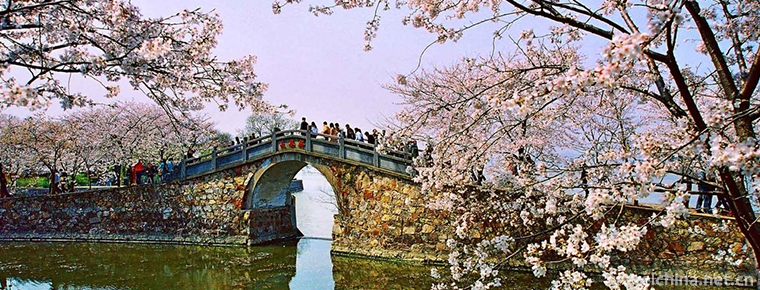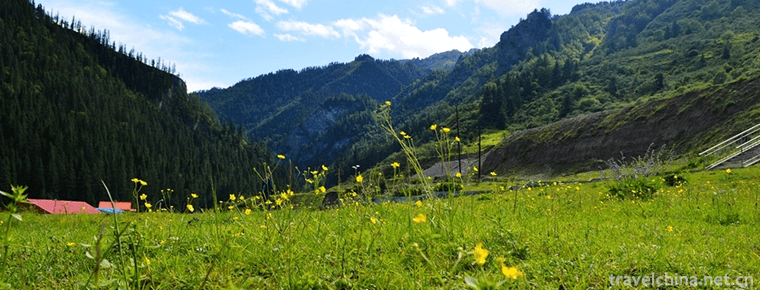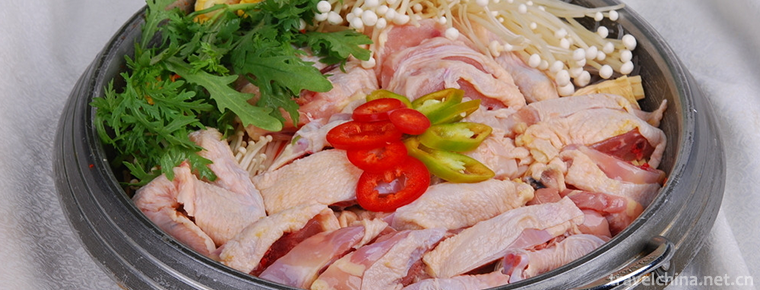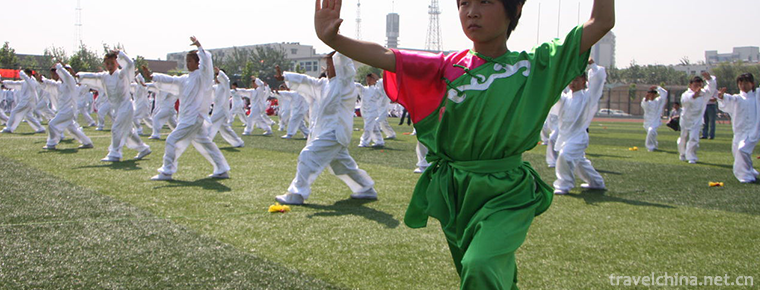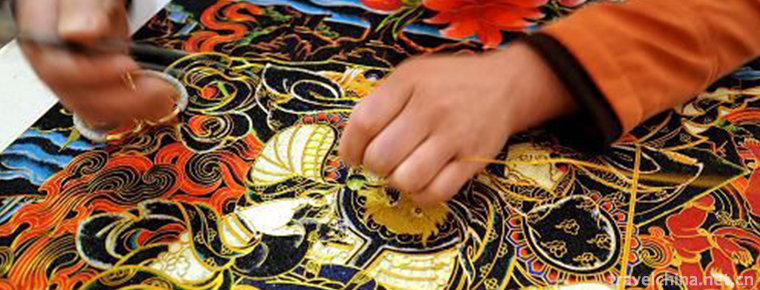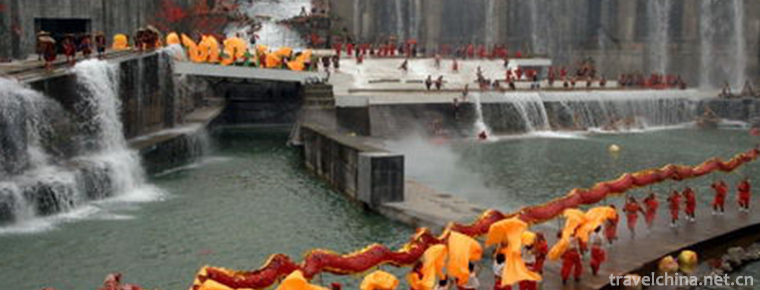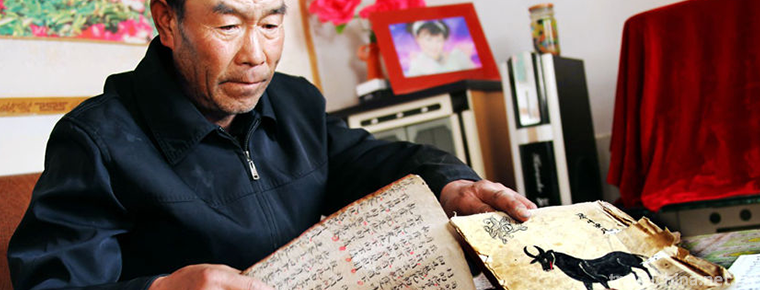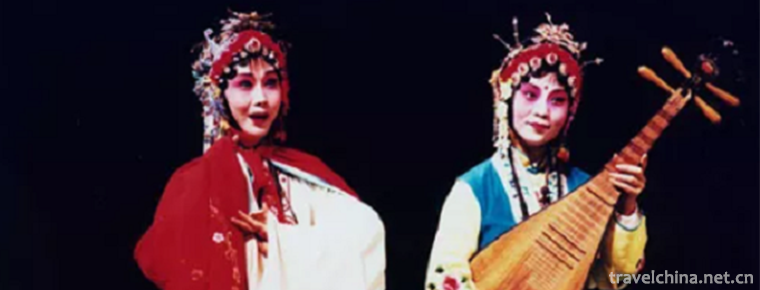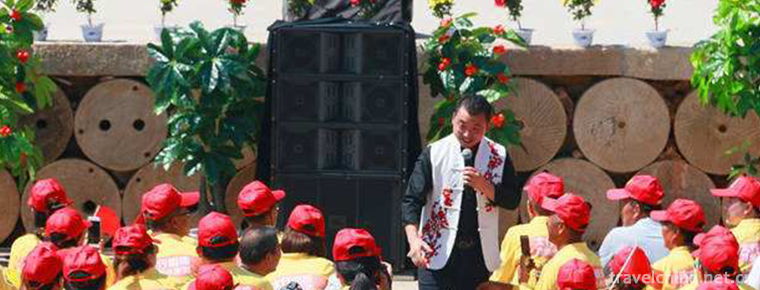The Tu nationality in Yuqiu
The Tu nationality in Yuqiu
Tu Yuqiu, a traditional dance of Tongren County in Qinghai Province, is one of the national intangible cultural heritages.
Tu nationality, spread in Nianduyu Village, Tongren County, Qinghai Province, is a unique local folk culture form. It is held from November 5 to 20 of the lunar calendar every year. It includes ceremonies such as chanting peace sutras, entertaining people and gods, dispelling epidemics and exorcising evil spirits. The dodder is also the name of dancer. At the beginning of the ceremony, dancers named Yu Dou performed along the village with tiger and leopard patterns painted on their bare upper bodies and danced door to door. The Tu nationality has a history of hundreds of years since the dodder dance was spread.
On May 20, 2006, the Tu nationality was approved by the State Council to be listed in the first batch of state-level intangible cultural heritage, the heritage number: III-40.
historical origin
Yu Qi is a relic of the tiger totem worship of the ancient Qiang tribe, which only exists in the Niandu Village of Tongren County, Qinghai Province.
The word "Yu" originated from Zuo Zhuan, which belongs to the dialectal appellation of tiger by ancient Chu people. In the case of dodder, the nickname of tiger. As for the origin of "Yuqiu", there are many opinions: first, "Yuqiu" belongs to the ancient Chu witch dance, is the Chu people's worship of tigers Nuo custom, with the Ming Dynasty Army garrison frontier fields and introduced to Qinghai colleagues; second, the ancient Qiang people living in Qinghai worship Tiger Totem legacy; third, the Tu people worship tigers from the Inner Mongolian grassland, with migration to Tongren Tu.
There are many viewpoints about the historical origin of Yuqiu custom, such as Chu Feng theory, Qiang custom theory, Ben religion ritual theory, and many other viewpoints among the people. In the Regong area of Tongren County, Qinghai Province, the local people believe that the 20th lunar month is a "black day" every year. At this time, demons and ghosts come out to commit disorder, so they have to hold sacrificial activities to jump on the dodder, which is to imitate the action of tigers, in order to expel demons and bless Taiping.
In recent years, the Turkish people resumed their activities in Tiao, and Awu was not too old. However, Awu could not ignore the issue of inheritance of this national cultural heritage.
On May 20, 2006, the Tu nationality was listed in the first batch of national intangible cultural heritage list with the approval of the State Council.
Dance features
Performing Form
There is a fixed procedure for skipping over. In the early morning, seven young men (two big ones and five small ones) selected by the Tu tribes gathered in front of the mountain temple, took off their clothes and pants in the severe winter wind, drew tiger and leopard stripes on the exposed body and limbs, and tied up their hair to dress up as "Yu Dou" angry portrait. They each hold a stick with a banner attached to the top of their hands. Under the chairmanship of the wizard Lava, they recite scriptures, kneel down to worship Erlang and Shan Gods, and then drink one by one from Vala, so that the tiger soul can attach itself to "Yu Dou". At this time, these "Yu Dou", who can no longer speak, has transformed the original personality into the existing deity in the minds of the people, and has acquired the ability to drive away ghosts and epidemics. With a burst of explosions of iron brackets and firecrackers, five younger "Yuzhu" went straight to the village below the mountain. Accompanied by the abbot of the temple, the wizard "Lawa" led two big "Yuzhu". While beating drums and gongs, he walked slowly and skipped through the streets in order to clean up the epidemic ghosts wandering outside the houses. The other five younger "Yu Tu" had already been admitted to the hospital, or jumped on the roofs of each household to exorcise evil spirits. Every time they go to a house, they jump around to show that they can drive away ghosts and evil spirits, then eat or mouth the cooked meat prepared by the owner of the household, and then continue to enter another yard from the roof. It is interesting to note that the reason why these "yu" have to enter from the roof instead of the street door is that people are afraid that the pestilent ghosts wandering in the streets will take the opportunity to sneak into the houses. But if "Yu Chu" would like to go out of the house gate, it would be regarded as taking the pestilent ghost away from the house without objection. During the ceremony, no matter how big or small "Yu Ju", people will accept the circle cake on the stick of the thorn, so that it can get inspiration. In addition, some patients also take the initiative to rely on the "Yu" must go through the road, waiting for "Yu" from the body to cross, in order to take away the evil to recover.
During the performance, the audience threw the circle buns on the sticks held by the "Yu" people, and strung them on the sticks, meaning to avoid evil. When the guns were fired at them and they flew to the river outside the village, the Turkish people cheered around to celebrate the removal of evil spirits. When the dodders washed the tiger stripes all over the river, the wizard knelt down by the river and chanted aloud, burning paper money to show the devil away from the village.
Clothing characteristics
"Yuqiu" Dance is a model performance of seven Turkish young men dressed as tigers, and painted as costumes, that is, the face and body are painted as tiger-leopard pattern. The musical instrument is a drum (single-skin drum) gong. During the performance, the dancers tie their hair tightly on the top of their heads. Seven people wear white stripes with written texts, slacks, pants legs to thighs, stripes with tiger skin on their legs, belts around their waists, cloth shoes, two meters long sticks in hand, and white stripes with scriptures on the end of the sticks.
distinguishing features of music
"Yu Dance" music is mainly composed of gongs and drums, and "Yu Dance" and sacrificial ceremonies are accompanied by one-sided sheepskin drums and gongs. Although single and slow, it is accompanied by the whole process of "Yu Dance", which has a sense of divinity and solemnity. Its musical mode and tonality also have some exquisite, that is, the tone is flat and low, the rhythm is slow.
Dance movements
In the dodder dance, the dancers are all male, performing by seven people. In the dodder dance, "front leg dance" constitutes its dance characteristics. The performance style is wild. It is a unique Tu sacrificial dance. It performs front leg dance and double stick dance to demonstrate the tiger. The rhythmic movements of running, jumping, sucking legs and padding are the basic features of the dance. The vocabulary and rhythm of the dance are relatively single. The main movement of the dance is "padding step, sucking legs and looking over", because the dancer holds a tree stick about two meters long with both hands, so the upper body and gesture movements are relatively simple. The jumping range and movement of leg movements are also adapted to the development and change of dance mood. Judging from the dance form of "Yu Dou", it is a form of primitive animal-like dance in contemporary literati folk activities. Animal-like dance is closely related to the hunting life of primitive people, and it is the most common and representative form of primitive dance.
Inheritance and Protection
Inheritance value
The primitive and primitive folk dance, influenced by the totem worship of the ancient Qiang people and tigers, is also an important dance cultural heritage of the Tu people, reflecting the traditional cultural features of the Tu people.
It is of great significance to preserve and expand Yuqiu for displaying the originality and richness of the traditional culture of the ethnic group and enhancing the ethnic identity and cultural consciousness of the upper ethnic group.
Current situation of inheritance
Yuwu series of folk activities once spread in some villages of Longwu River Basin, but now they are inherited by villages only in a year, and are in an endangered state.
Heritage figures
Awu, male, Tu nationality, born in 1950, is a colleague of Qinghai Province. The second batch of state-level intangible cultural heritage projects, the representative inheritors of Tu nationality, were declared by Tongren County, Qinghai Province.
protective measures
In 2019, Regong Art National Public Welfare Tour Exhibition was held, and Tu Yu and other cultural tourism festivals were held continuously.
In 2018, the Qinghai Provincial People's Government issued a government order to participate in the "Measures for the Protection of intangible cultural heritage in Qinghai Province" and implement it.
social influence
Important Exhibitions
Every year on the twentieth day of the twentieth lunar month, sacrificial activities of jumping on the dodder are held.
In 2018, the Tu Photogrammetric Winter Winter Collection Event was held in Tongren County.
In 2019, in the "Western Regions Scenic Splendid Wong Nan" press conference of cultural tourism activities in 2019, the dodder dance was displayed in it.
Honorary recognition
In 2016, the Tu nationality participated in the creation of the large-scale original national dance drama Tangka.
In 2018, the Tu people participated in a series of activities such as the "Non-Heritage Survey".
In 2008, Awu representative Yuqiu became the representative successor of the second batch of national intangible cultural heritage projects.

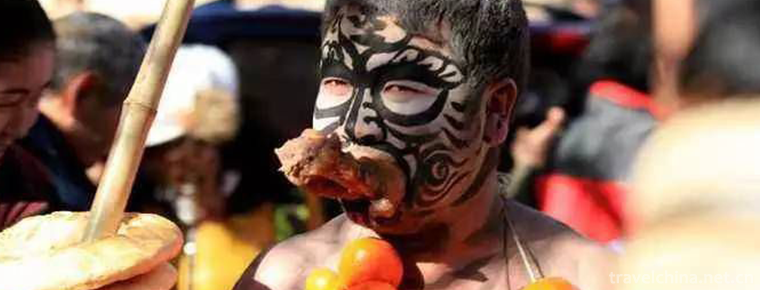
-
Turtle Head Islet
Yuantouzhu is a peninsula lying on the northwest coast of Taihu Lake in Wuxi. It is named for its huge stone bursting into the lake in the shape of a tortoise with its head held high. Yuantouzhu.
Views: 188 Time 2018-12-06 -
Dongping Lake Scenic Spot
The total area of Dongping Lake Scenic Spot is 627 square kilometers, the annual water surface is 209 square kilometers, the average water depth is 2.5 meters, and the total water storage is 4 billion.
Views: 163 Time 2018-12-20 -
Great Wall of Ming Dynasty in Datong County
According to documents, the Great Wall of Qinghai Province in the Ming Dynasty was built in the middle of the Ming Dynasty. It lasted 51 years from 1546 to 1596..
Views: 159 Time 2019-01-07 -
Dayugou Scenic Area
Dayugou Scenic Area is located in Dayugou, Muer Township, Zhuoni County, Gannan Tibetan Autonomous Prefecture. It is 12 kilometers away from the county seat and has a total area of 105214.6 hectares..
Views: 163 Time 2019-01-07 -
Ginseng Chicken Hotpot
Wash ginseng, boil it in a little water, take out slices, and cook it in the original pot for 15 minutes. Still soak it in the original soup. All the above ingredients except hen nuggets and ginseng s.
Views: 239 Time 2019-03-24 -
Cangzhou Wushu
Cangzhou people have been known for their simplicity, integrity, diligence and bravery since ancient times. Because of the relationship between geography and historical conditions.
Views: 152 Time 2019-04-04 -
Weaving Techniques of Tibetan Bangdan and Kapa
The woolen apron commonly used by Tibetan people is called "Bangdian" in Tibetan, which has the functions of decoration and cold resistance. Jiedexiu Town, Gongga County, Shannan District, T.
Views: 162 Time 2019-04-05 -
Dujiangyan Drainage Festival
The Qingming Drainage Festival is a traditional festival in Dujiangyan, Sichuan Province. Every year during the Qingming Dynasty, Dujiangyan City welcomes the annual Qingming Drainage .
Views: 233 Time 2019-04-28 -
Hexi treasure roll
Hexi Baojuan, a traditional folk literature in Liangzhou District of Wuwei City and Suzhou District of Jiuquan City, Gansu Province, is one of the national intangible cultural heritages..
Views: 119 Time 2019-05-03 -
Soviet Opera
Su Opera is a combination of Huagu Tanhuang, Nanci and Kunqu Opera. It is popular in the urban and rural areas of southern Jiangsu and Northern Zhejiang. Its predecessor, Sutan, was originally called .
Views: 72 Time 2019-06-16 -
Left power blossoms
The style of Zuoquan folk songs began to take shape in Sui Dynasty. In 1930s, Zuoquan flowering tune was derived from Zuoquan folk songs. Zuo Quan's blooming tunes are exquisite in conception, novel i.
Views: 368 Time 2019-08-16 -
Dazhou City honor
On June 9, 2020, Dazhou was awarded the advanced municipal Party committee and government of Sichuan Province in promoting the development of service industry..
Views: 231 Time 2020-12-20
